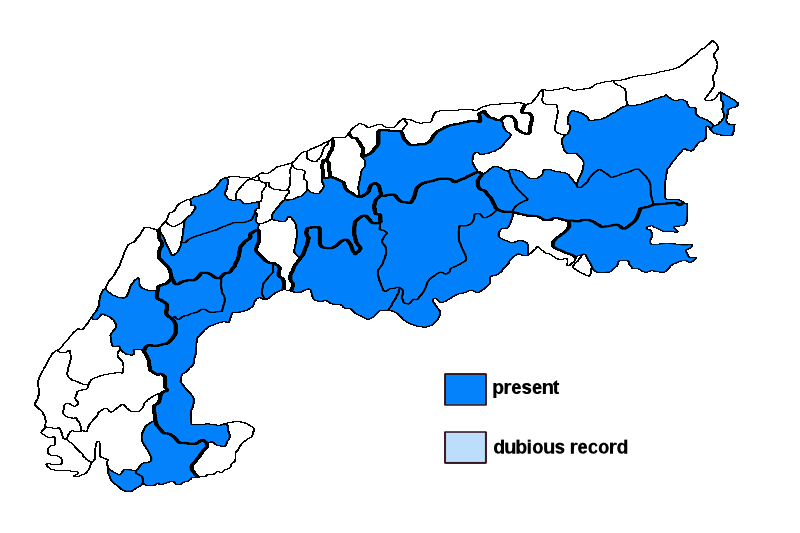Caloplaca demissa (Körb.) Arup & Grube
Syn.: Imbricaria demissa Flot. nom. inval., Lecanora demissa (Körb.) Zahlbr., Lecanora incusa (Flot.) Vain., Placodium demissum Körb.
Lichenised.
Substrate: siliceous rocks, intermediate rocks (such as calciferous schists)
Altitudinal range: from the mesomediterranean belt (potential vegetation: evergreen broad-leaved forests dominated by Quercus ilex) to the subalpine belt (potential vegetation: open, taiga-like forests dominated by Larix decidua and/or Pinus cembra and Rhododendron)
Note: a mild-temperate to xeric subtropical species found on south-facing, steeply inclined to underhanging surfaces of basic siliceous rocks, both in dry-warm valleys of the Alps (in the submediterranean belt) and in the Mediterranean belt; much less bound to water seepage than Peltula euploca and ecologically related species. This species, always sterile, was earlier positioned in the Lecanoraceae, in the genera Lecanora and Placolecanora, because of its general appearance, and has a quite remote position in the Teloschistaceae, with no supported sister lineage. It was segregated in the genus Olegblumia, but with a wrong basionym, which makes that name illegitimate.
Austria: Tirol; Kärnten; Steiermark; Burgenland; Switzerland: Bern; Graubünden; Valais; France: Alpes-Maritimes; Savoie; Var; Italy: Veneto; Trentino Alto Adige; Lombardia; Piemonte; Valle d'Aosta; Slovenia: Alpine and Pre-Alpine Slovenia;





